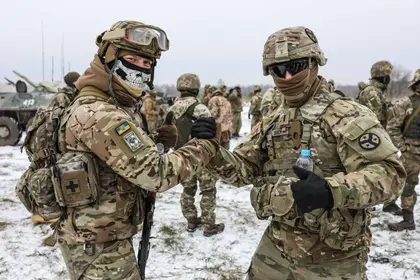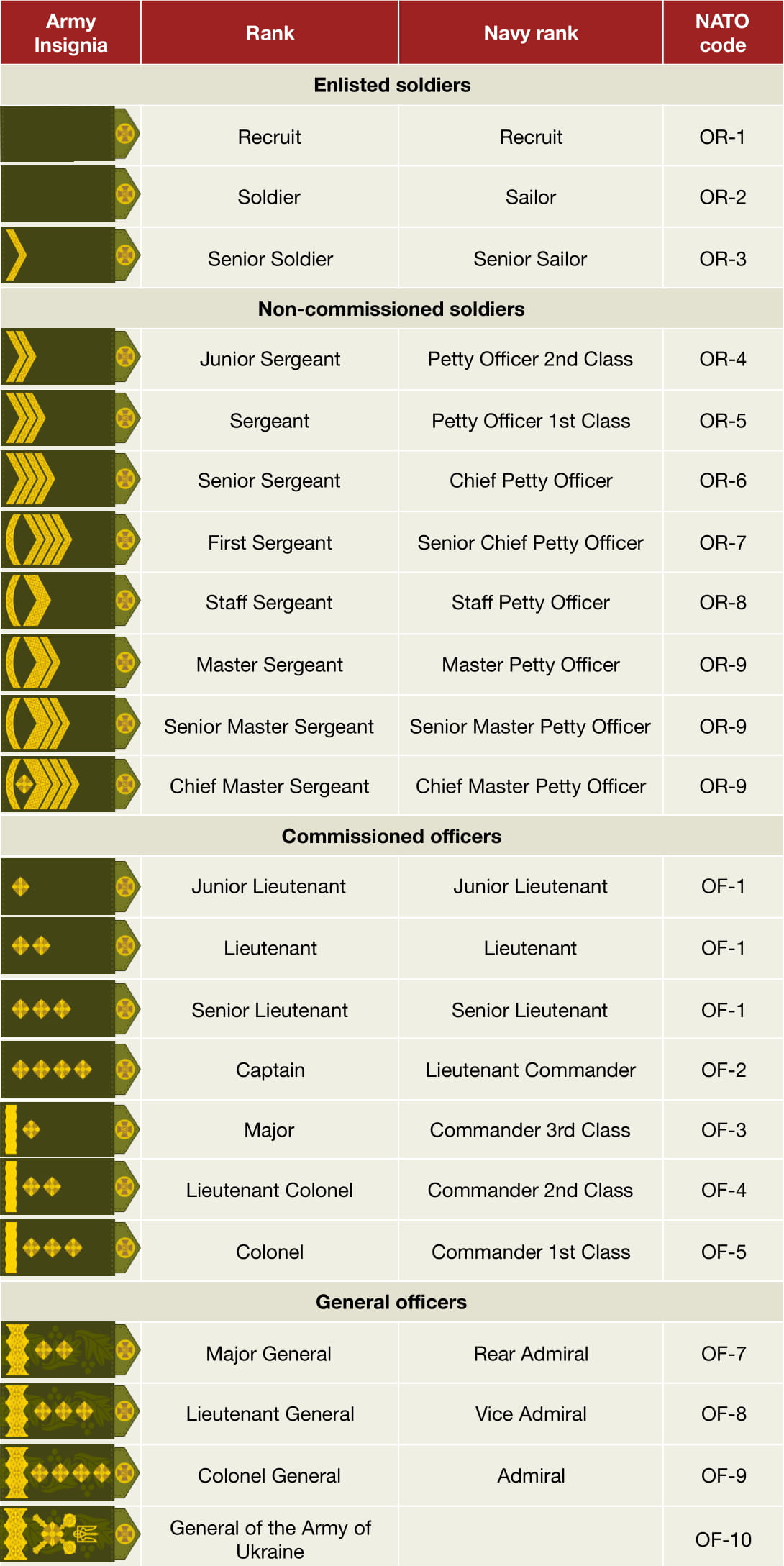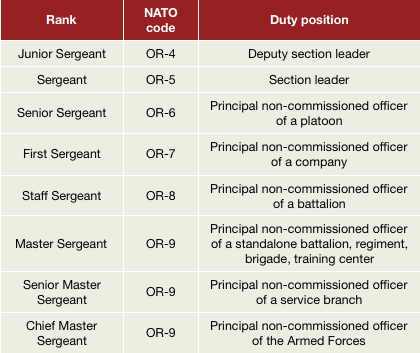After years of delays and setbacks, the Verkhovna Rada finally approved a long-suffering bill that includes amendments to Ukrainian military regulations on Oct. 17, bringing them into conformity with NATO’s practices.
Most importantly, the bill enshrines a new order of military rank for the country’s armed forces, creating a corps of non-commissioned officers (NCOs) in a fashion similar to that of the U.S. Army.
As part of the country’s 2020 military reform aimed at reaching full compliance with NATO forces, the new regulations eliminate the old military rank of “praporshchik” (a rough equivalent of the U.S. Army’s rank of warrant officer for Soviet and post-Soviet militaries) and also synchronizes the new order of Ukrainian military ranks with its universal NATO equivalent under the Alliance’s STANAG 2116 standardization agreement.
The new list includes a whole range of ranks in the army NCO section, such as junior sergeant, sergeant, senior sergeant, first sergeant, staff sergeant, master sergeant, master sergeant, senior master sergeant, chief master sergeant, all put into compliance with their corresponding NATO ranks. Also, New corresponding ranks for navy NCOs were formalized.
Distinct from the list’s earlier versions, the law also introduces the rank of recruit (NATO code OR-1). As sources in the Ukrainian General Staff explained to the Kyiv Post, this rank was added to be assigned to newly enlisted servicepersons before giving their military oaths after basic training and obtaining the rank of soldier (OR-2).
In general, the new regulations formalize the corps of professional and career non-commissioned officers as a core and backbone of the Armed Forces. The new structure ultimately disconnects from the old Soviet-style model, in which sergeants are a lowly rank in a single-strand hierarchy.
Instead, Ukraine is switching to Western military model, in which commissioned officers and their sergeants form two parallel strands of hierarchy. NCOs normally play a crucial role in the army’s everyday life, taking care of every soldier on a daily basis, maintaining proper discipline and morale, organizing training and managing their squads, platoons, companies, battalions and divisions correspondingly.
They handle the day-to-day issues of running a military force while commissioned officers are busy making decisions and planning.
”In NATO armies, a battalion commander and a battalion sergeant major are not a boss and a subordinate, but two equally weighted experts working in different ways,” as Oleksandr Kosynskiy, the chief NCO of Ukraine’s Armed Forces and the reform’s mastermind, told the Kyiv Post in a February 2018 interview.
“There are people who tend to prefer brain work, who love planning, strategy-making, so they are natural-born commissioned officers. However, others aspire to work with personnel, give training, directly lead soldiers into action and so on. It is they who should become NCOs.”
Similarly to U.S. Army rules, this full-fledged corps of NCOs is to take care of training and the everyday life of servicemen at all unit levels, starting from a squad of 3-12 soldiers led by a sergeant, to the entire Armed Forces, which would be supervised by the most senior NCO – the chief master sergeant.
The new arrangement of ranks matches the NATO scale universal to all alliance armies. A new Ukrainian sergeant would be equal to OR-5 – completely compatible with NATO chain of command during combined combat operations or drills – which is the ultimate goal of the 2020 military reform.
Despite the reform’s importance, it took Ukrainian lawmakers years to finally give it a go.
The first bill to incept the amendments was submitted to the Rada as far back as in April 2017. Nonetheless, it was left collecting dust in the parliament’s committees for years without any progress.
Several other bills were neglected too. In particular, in late February and May 2019, the Rada failed to gather enough votes to pass similar restructuring bills and eventually took them off the table.
Despite bald promises, the previous parliament never passed the key military amendments.
The reform’s years-long footdragging caused concerns among many Western-minded military officers advocating for the bills. In particular, a failure to meet the military reform’s deadline in late 2020 was feared to have the potential to curtail NATO’s technical support of Ukraine.
Nonetheless, the eventual success in the new parliament is a breath of fresh air for the belated and long-overdue westernization of Ukraine’s military, according to the Armed Forces’ chief NCO Oleksandr Kosynskiy.
“It should be noted that these revolutionary changes will resonate the whole reform of the national military force,” the senior officer told the Kyiv Post on Oct. 17.
“This is the point of no return.”
You can also highlight the text and press Ctrl + Enter






